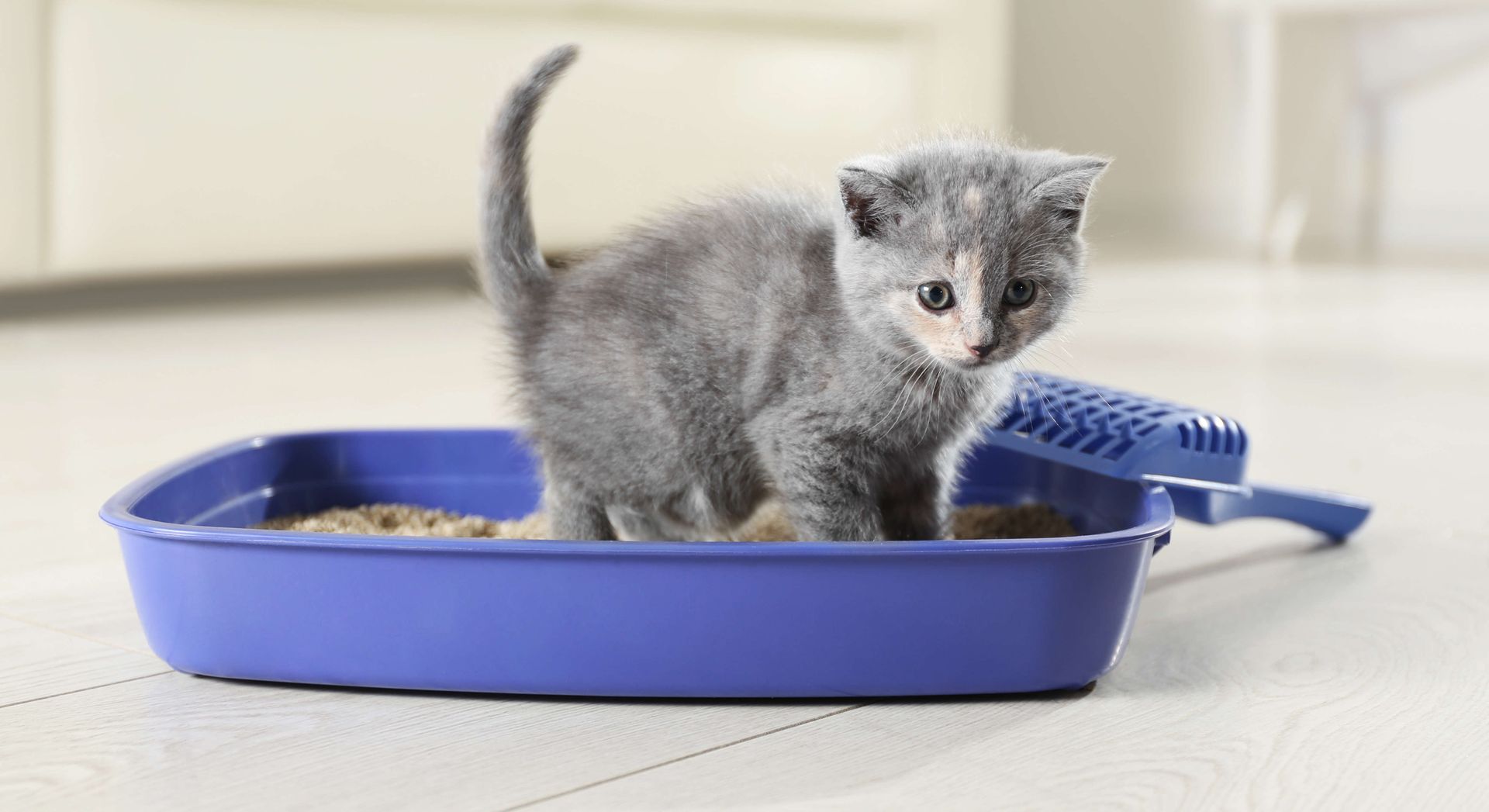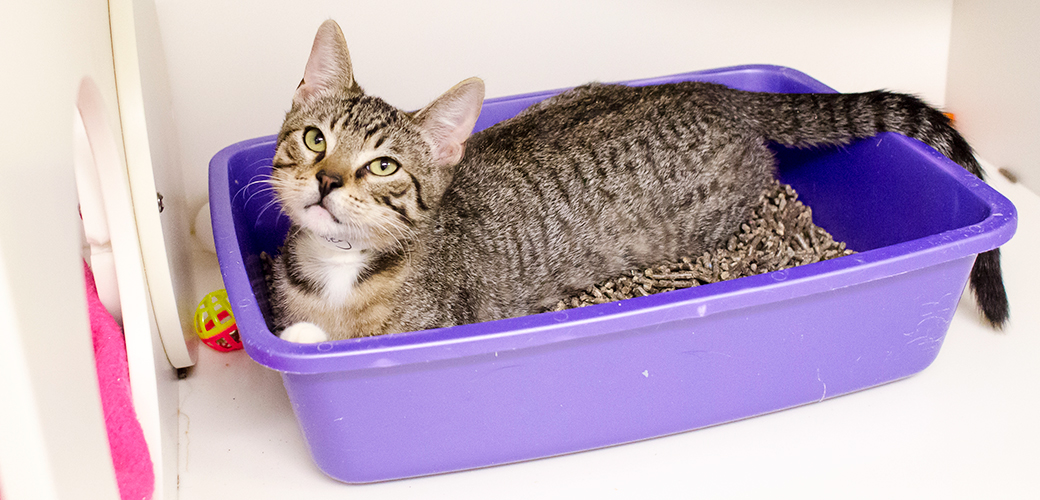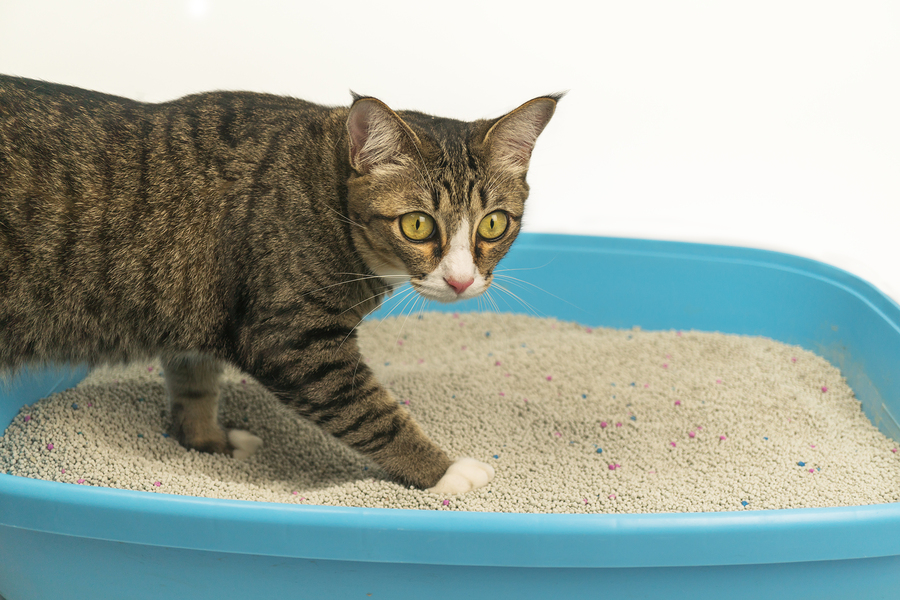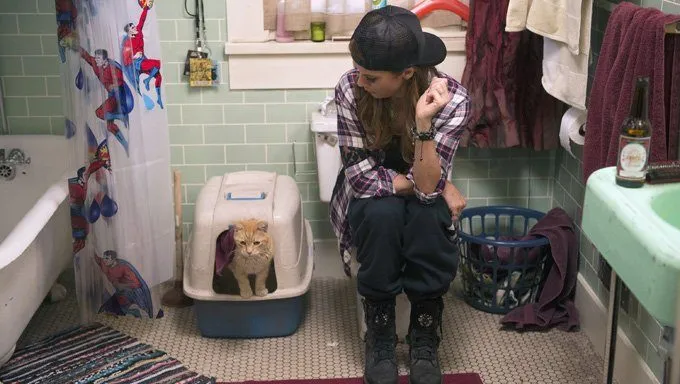Tip 1: Scoop Daily
Remove Solid Waste Immediately

The first crucial step in controlling a stinky litter box is to scoop daily, remove solid waste immediately.
This may seem obvious, but many cat owners overlook this simple task, which can lead to unpleasant odors and health risks for both humans and cats.
Scooping the litter box every day helps to prevent the buildup of ammonia from urine and feces, which is a major contributor to stinky litter boxes.
Ammonia can cause respiratory problems in cats and people who breathe it in, so removing solid waste daily can help minimize exposure to this toxic gas.
To scoop efficiently, start by separating the solid waste from the clean litter.
You can use a small scoop or even your hands (but make sure they’re clean) to pick up the solids and transfer them into a trash bag or a designated area for disposal.
Next, pour any remaining urine-soaked litter into the trash as well, taking care not to spill it onto the surrounding surface.
Rinse your scoop thoroughly with warm water and dry it before using it again to prevent bacterial growth.
For cats that produce particularly large amounts of urine or stool, you may need to change the litter entirely every few days or use an odor-absorbing product in addition to regular scooping.
To prevent the buildup of bacteria that cause odor, scoop out solid waste as soon as possible. This is a crucial step in controlling stink.
The first and most essential tip for controlling a stinky litter box is to scoop daily. This task may seem like a chore, but it’s actually a crucial step in preventing the buildup of bacteria that cause odor.
Scoopable litters are designed to clump when your cat urinates on them, making it easier to remove the solid waste and keep your litter box clean. However, even scoopable litters need regular maintenance to prevent the accumulation of bacteria.
When you don’t scoop out solid waste regularly, moisture from the waste can seep into the litter, creating an ideal environment for bacterial growth. As these bacteria multiply, they release compounds that give off unpleasant odors.
The frequency at which you need to scoop your litter box depends on several factors, including the number of cats using it and the type of litter you’re using. A general rule of thumb is to scoop out solid waste at least once a day for every cat using the litter box.
It’s also essential to change the litter completely every 7-10 days to prevent any lingering bacteria from causing odor. This will help keep your litter box fresh and clean, reducing the likelihood of stinky odors.
To make scooping easier, consider investing in a scoop with a long handle or one that has a built-in bag to catch waste. You can also try using an automatic litter scoop, which can save you time and effort.
By following this simple tip and making scooping a habit, you’ll be able to control the stink in your litter box and keep it fresh for your cat’s comfort.
Keep Litter Box Clean and Dry
The first tip for controlling a stinky litter box is to Scoop Daily. This means removing solid waste and clumps from the litter box at least once a day, ideally after each use.
This is crucial in maintaining a clean and hygienic environment for your cat. If left uncleaned, bacteria and odors can multiply rapidly, making the litter box an unpleasant place for your cat to use.
When scooping daily, make sure to remove all visible waste and clumps. You can also use a scoop that’s designed specifically for litter boxes to make the process easier and more efficient.
To take it a step further, you should also Keep Litter Box Clean and Dry. This means changing the litter completely every 7-10 days or sooner if necessary. You can also add a small amount of baking soda or activated charcoal to help absorb moisture and odors.
A clean and dry litter box is essential for your cat’s health and well-being. Cats are highly sensitive to smells and will avoid using a dirty litter box altogether, leading to accidents outside of the box and other problems.
University research suggests that regular cleaning is essential to reduce odors (1). Remove all debris, clumps, and solid waste before adding fresh litter.
To start managing odor, it’s essential to adhere to a scoop daily routine as per the first tip. Regular cleaning plays a significant role in controlling unpleasant odors according to research conducted by universities (1). This means that you should remove all solid waste and clumps from your cat’s litter box on a daily basis.
The importance of removing debris and solid waste cannot be overstated, as these components are often the primary cause of stinky odors in the litter box. By clearing out these items regularly, you can help reduce the likelihood of bacterial growth and odor-causing compounds from forming in the litter box.
It’s worth noting that scoop daily is not just about removing solid waste; it also involves cleaning any clumps or debris from the litter itself. This helps to prevent moisture from accumulating in the litter, which can contribute to unpleasant odors. By maintaining a clean litter surface through regular scooping, you can help create an environment that’s less conducive to odor-causing bacteria and microorganisms.
By incorporating this essential habit into your daily routine, you’ll be well on your way to reducing the stinky litter box problem. It may seem simple, but adhering to a scoop daily routine will have a significant impact on maintaining a fresh and clean litter box environment for your feline companion.
Remember that consistency is key when it comes to managing odors in the litter box. By sticking to this habit, you can help create a healthier environment for your cat to thrive in, while also reducing unpleasant smells throughout your home.
Tip 2: Choose the Right Litter
Sand-Free and Odor-Absorbent
Selecting the correct litter is a crucial aspect of maintaining a clean and odor-free litter box. The ideal litter should be able to effectively absorb waste and odors, while also being gentle on your cat’s paws.
When choosing a litter, it is essential to consider its absorbency properties. Look for litters that are specifically designed to absorb moisture and odors quickly, such as those made from clay or silica gel. These types of litters can help reduce the amount of waste in your litter box and prevent unpleasant odors from spreading.
Some cats may have sensitivities or allergies to certain materials, so it’s crucial to choose a litter that is hypoallergenic and gentle on your cat’s paws. For example, some cats may be sensitive to clay-based litters, while others may prefer natural fibers like bamboo or pine.
Sand-free litters are an excellent option for pet owners who want to avoid the mess and health risks associated with sand. Sand can cause respiratory problems in cats and even humans if inhaled, making it essential to opt for a sand-free litter. Some popular sand-free litters include those made from recycled paper, walnut shells, or silica gel.
When selecting a litter, also consider the odor-absorbent properties of the material. Litters with natural scent-neutralizing agents can help minimize odors in your home. Some popular odor-absorbent litters include those infused with charcoal, tea tree oil, or essential oils. These ingredients can help eliminate unpleasant smells and leave your litter box smelling fresh.
Ultimately, the key to finding the perfect litter is to consider your cat’s individual needs and preferences. Experiment with different litters to find the one that works best for you and your feline friend.
Select a highquality litter that’s sandfree and specifically designed to absorb odors. This will help reduce stench levels in the home (2).
Litter choice can significantly impact the level of stench associated with a litter box, as some litters are designed to control odors better than others.
When selecting a high-quality litter that’s sand-free, look for one specifically designed to absorb odors.
This type of litter is engineered to minimize the pungent smells commonly linked with urine and fecal matter in cat waste.
The goal is to find a litter that strikes an optimal balance between odor control and your cat’s comfort and health, as well as your own preferences regarding cost and maintenance requirements.
Some popular options for odour-absorbing litters include
Baking soda-based litters: These use the natural deodorizing properties of baking soda to reduce stench levels.
These products are generally more cost-effective than other types, but their effectiveness may not be as pronounced as that of silica gel or activated charcoal based litter.
Silica gel-based litters: These work by attracting moisture and odours from the litter box and holding them in their pores, thereby reducing unpleasant smells.
They are a popular choice for cat owners, but may require more frequent replacement than other options.
Activated charcoal-based litters: These employ the natural odour-absorbing qualities of activated charcoal to minimize stench levels.
These products are often preferred by cat owners who value their eco-friendliness and hypoallergenic properties.
Precipitated calcium carbonate-based litters: These use the natural odor-absorbing qualities of precipitated calcium carbonate to reduce stench levels.
These products are generally considered eco-friendly and hypoallergenic, but may not be as effective at odour control as other options.
Clumping clay-based litters: These use the natural clumping properties of clay to create a solid mass that can easily be scooped out of the litter box.
These products are often preferred by cat owners who value their convenience and ease of use, but may not be as eco-friendly as other options.
Pelleted litters: These are made from compressed sawdust or other organic materials and can provide effective odour control.
These products are often preferred by cat owners who value their eco-friendliness and low cost, but may not be as effective at odour control as other options.
Bamboo litters: These use bamboo fibres to provide a natural, eco-friendly, and hypoallergenic litter option.
These products are often preferred by cat owners who value their eco-friendliness and hypoallergenic properties, but may not be as effective at odour control as other options.
Avoid Clumping Litters for Multi-Cat Households

Cats are meticulous creatures that have a keen sense of smell and can be sensitive to strong odors. A dirty litter box can be a major contributor to stinkiness in your home, so it’s essential to choose the right litter for your multi-cat household.
Tip 2: Choose the Right Litter, Avoid Clumping Litters for Multi-Cat Households is crucial because clumping litters can create more problems than they solve. While they may seem convenient and easy to clean, clumping litters often contain silica gel or other materials that can be toxic to cats if ingested.
In multi-cat households, the risk of ingestion increases significantly. If one cat eats a small amount of clumping litter, it’s likely to be followed by another cat, which can lead to serious health issues.
Furthermore, clumping litters can also cause respiratory problems in cats and humans. The dust that’s generated when these litters are poured or scooped can become airborne and exacerbate conditions like asthma.
For multi-cat households, it’s better to opt for non-clumping litters made from natural materials like pine, cedar, or recycled paper. These litters are biodegradable and compostable, reducing the environmental impact of your cat’s litter box.
Some popular alternatives to clumping litters include:
Pine or Cedar Litters: Made from sustainable wood sources, these litters have a natural aroma that repels bacteria and odors.
Recycled Paper Litter: Eco-friendly and compostable, recycled paper litter is an excellent option for households with multiple cats.
Silica Gel-Free Litters: These litters are made from natural materials like coconut husk or corn cob and are free from silica gel and other toxic chemicals.
When choosing the right litter for your multi-cat household, remember to consider factors such as:
Dust levels: Opt for low-dust litters to minimize respiratory problems.
Natural odor control: Look for litters that use natural materials to repel bacteria and odors.
Compostability: Choose litters that are biodegradable and compostable to reduce waste.
Ease of cleaning: Select litters that make scooping easy and efficient.
By following these guidelines, you can choose the right litter for your multi-cat household and reduce stinkiness in the long run.
For multicat households, consider nonclumping litters as they’re often safer and less likely to cause mess (3).
For multicat households, selecting the right litter can make a significant difference in maintaining a clean and odor-free environment.
The tip emphasizes the importance of considering non-clumping litters for such households, suggesting that they are often safer and less likely to cause messes (3).
This is particularly relevant because multicat households tend to have more cats digging and playing in the litter, which can lead to a greater accumulation of waste and odor-causing bacteria.
Non-clumping litters, on the other hand, are designed to absorb moisture rather than form clumps when soiled. This reduces the risk of messes and allows for easier scooping and cleaning.
In addition, non-clumping litters tend to be gentler on cats’ paws and skin, which can help prevent irritation and discomfort during litter box use.
However, it’s essential to note that not all non-clumping litters are created equal. When choosing a suitable option for your multicat household, look for products made from natural or recycled materials that are low in dust and odor-causing compounds.
Avoid litters containing fragrances, dyes, or chemicals that can exacerbate indoor air pollution and negatively impact your cats’ health. Opting for an eco-friendly non-clumping litter can promote a cleaner, healthier environment for both your pets and the planet.
Tip 3: Increase Ventilation
Improve Air Circulation Around Litter Box
Avoid placing the litter box in areas with poor ventilation such as basements or cramped rooms, as this can exacerbate the stinky smell.
By following these tips for increasing ventilation around the litter box, you can significantly reduce odors and create a cleaner environment for your cat to thrive.
Remember that maintaining good air circulation is an essential part of keeping a clean litter box, and it’s something that should be prioritized along with regular scooping and changing of litter.
To reduce odor, improve air circulation around the litter box. This can be done by placing it near a window or using an exhaust fan.
A stinky litter box can be a nuisance to both you and your cat, but it’s not just about personal preference – a well-ventilated litter area is also crucial for your pet’s health.
Tip 3: Increase Ventilation focuses on the importance of improving air circulation around the litter box. This simple yet effective step can significantly reduce odor levels and make your home a more comfortable place to live.
The idea behind this tip is that a litter box that’s not well-ventilated becomes a breeding ground for bacteria, ammonia, and other odorous compounds. These substances are produced as waste breaks down in the litter, and without proper ventilation, they can accumulate quickly.
So, how do you increase ventilation around your cat’s litter box? One effective solution is to place it near a window. This will allow fresh air to circulate around the box and help dissipate any odor that might be present.
Another option is to use an exhaust fan in conjunction with the litter box. By directing the fan towards the litter area, you can actively remove stale air and replace it with fresher air from outside. This combination of natural and mechanical ventilation can greatly reduce odor levels.
Remember that increasing ventilation around your litter box doesn’t just benefit your sense of smell – it’s also essential for maintaining a healthy environment for your cat. Proper airflow helps prevent the buildup of toxic compounds that can irritate your pet’s lungs or even cause respiratory problems over time.
In addition to these benefits, well-ventilated areas are also less likely to attract pests like flies and rodents, which can be attracted by strong odors and other waste products.
Elevate Litter Box to Improve Drainage

Tip 3: Increase Ventilation, Elevate Litter Box to Improve Drainage
The smell emanating from a dirty litter box can be overwhelming and unpleasant for both you and your cat. To minimize this issue, it’s essential to ensure proper ventilation around the litter box. Here are some tips on how to increase ventilation and elevate the litter box to improve drainage:
Why Ventilation Matters
Avoids buildup of ammonia from urine, which contributes to unpleasant odors.
Prevents moisture accumulation, reducing the likelihood of fungal growth and bacterial proliferation.
Methods for Improving Ventilation:
Positioning: Place the litter box in a well-ventilated area, away from direct sunlight and heat sources. Ensure it’s not situated near air conditioning or heating vents, as this can cause dust to become airborne.
Screened Windows: Install screened windows above or beside the litter box to allow for cross ventilation. This allows fresh air to circulate while keeping insects at bay.
Air Purifiers: Consider placing an air purifier nearby to help eliminate odors and particulate matter from the surrounding environment.
Elevating the Litter Box for Improved Drainage:
Step-Up or Ramps: Invest in a litter box with built-in ramps or steps, allowing your cat to easily enter and exit while keeping their paws dry. This design promotes proper drainage and prevents water from accumulating.
Platforms and Risers: Use platforms or risers under the litter box to elevate it about 6-8 inches off the ground. This reduces the likelihood of moisture accumulation and helps prevent unpleasant odors.
In conclusion, increasing ventilation and elevating the litter box are essential components in maintaining a well-functioning and odor-free litter box environment for your feline friend.
Place the litter box on an elevated platform or tray with drainage holes to prevent moisture buildup (4).
When it comes to minimizing odors from a litter box, proper ventilation is crucial. Tip #3 focuses on Increasing Ventilation, which can be achieved in several ways.
The first method involves placing the litter box on an elevated platform or tray with drainage holes. This simple yet effective technique helps to prevent moisture buildup, a common contributor to unpleasant odors. By allowing excess water to drain away from the litter box, you can reduce the likelihood of bacterial and fungal growth, which are often responsible for lingering smells.
The elevated platform or tray serves as a barrier between the litter box and the floor, keeping moisture contained and preventing it from seeping into the surrounding environment. This not only minimizes odors but also helps to maintain a cleaner and healthier living space.
It’s essential to note that this tip is particularly useful for clumping litters, which can become soggy and develop strong odors when exposed to excessive moisture. By using an elevated platform or tray with drainage holes, you can keep your litter box smelling fresher for longer.
In addition to its practical benefits, this tip also contributes to the overall well-being of your cat. Cats are naturally sensitive to strong smells, and by reducing odors from the litter box, you can create a more comfortable and welcoming environment for them.
- Best LeadsGorilla Alternatives for 2025 - April 19, 2025
- Best Coldlytics Alternatives for 2025 - April 19, 2025
- Best Brevo Alternatives for 2025 - April 18, 2025



